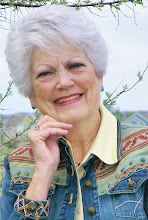The next archetype is the Shadow. He represents the energy of the dark side, in other words, the villain, antagonist or enemy. He hopes to see the Hero fail. In some cases, the Shadow may be the shady part of ourselves that keeps us from succeeding, wrestles with bad habits, and old fears. The Shadow can also be the Shapeshifter in the form of vampires or werewolves.
The Shadow's dramatic side challenges the Hero. Some say a story is only as good as its villain, or Shadow.
The Shadow's mask hides any of the story characters. He may appear as Mentor while hiding the Shadow side of his personality. The Shadow may start out as a love interest in a romance novel who shifts to become the one who attempts to destroy the Hero. He can perform as a Trickster or Herald who lures the Hero into danger, or, a villain who experiences a change of heart like the Beast in "Beauty and the Beast."
A touch of goodness humanizes the Shadow. Disney cartoons are good examples of humanized Shadows - Captain Hook in "Peter Pan," the demon in "Fantasia", the wicked queen in "Snow White,"
the glamorous fair in "The Sleeping Beauty," Cruelle in "One Hundred and One Dalmatians." Because of their qualities, they were made to seem even more sinister. The Shadow does not always perceive himself as a villain.
There is more to a Shadow but space prevents my expounding. Borrow the book from a library and read all these archetypes for yourself.
There is only one Archetype left, Trickster, in Book One of Vogler's "Writer's Journey," called Mapping the Journey. Then we'll cover Book Two: Stages of the Journey, where we go deeper into the 12 story elements we discussed in the beginning of this series. You might consider outlining the 12 elements leaving space for notes as well as the Archetypes, for easy reference.
Monday, March 28, 2011
Subscribe to:
Post Comments (Atom)




No comments:
Post a Comment